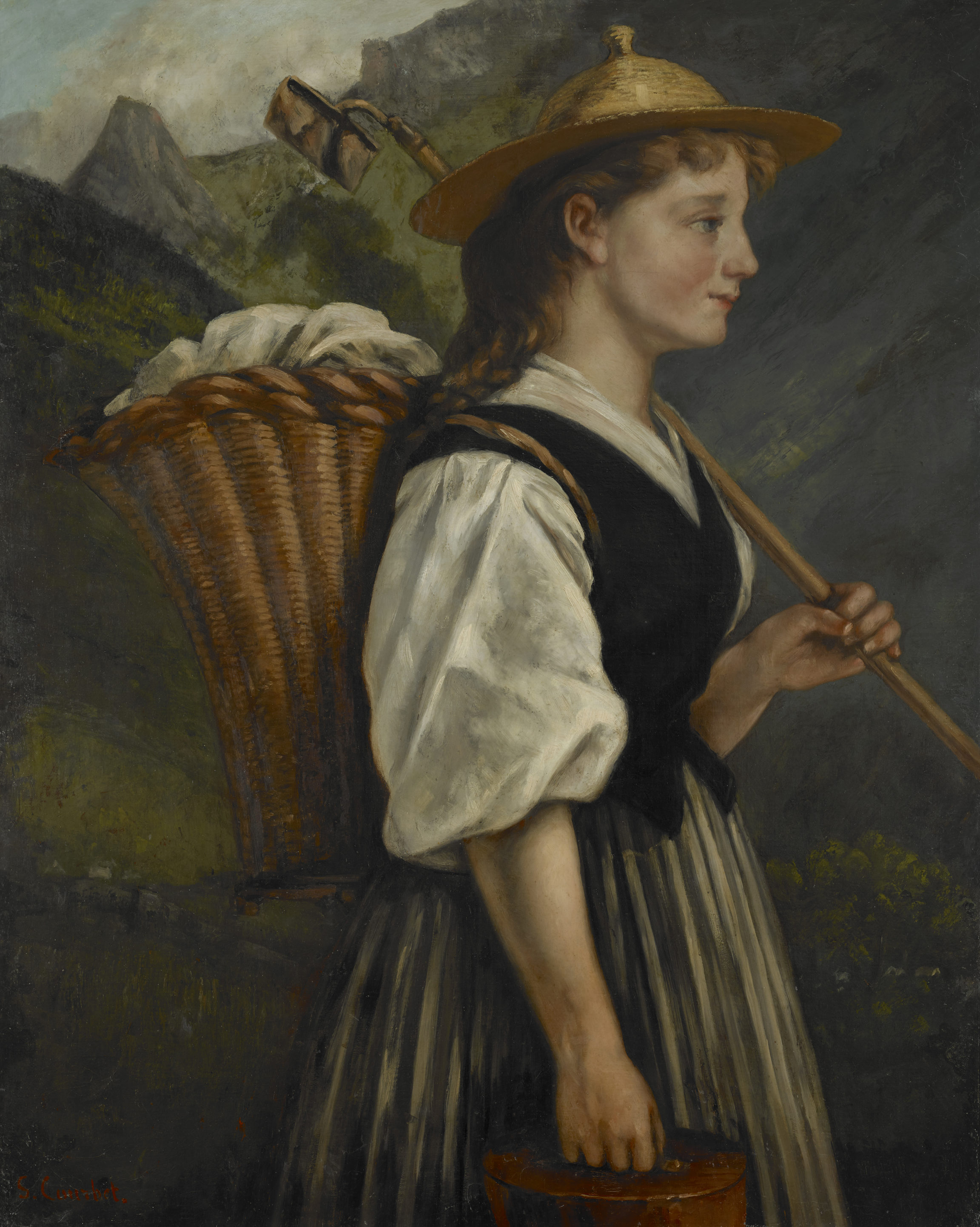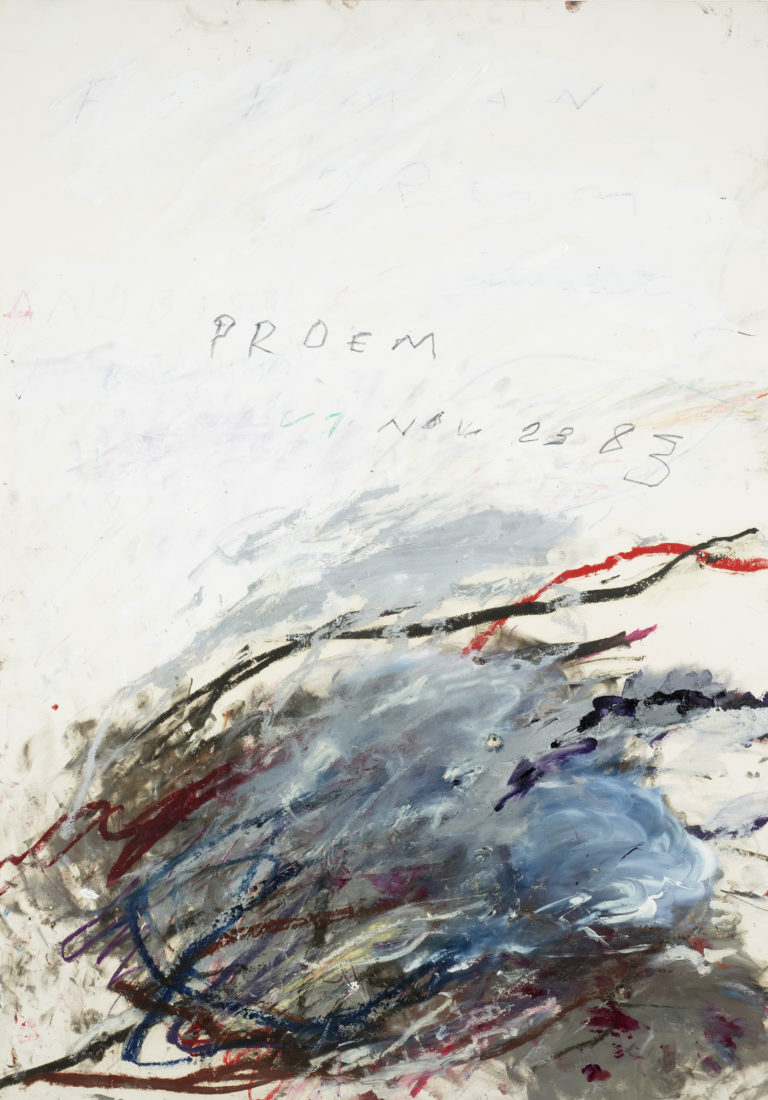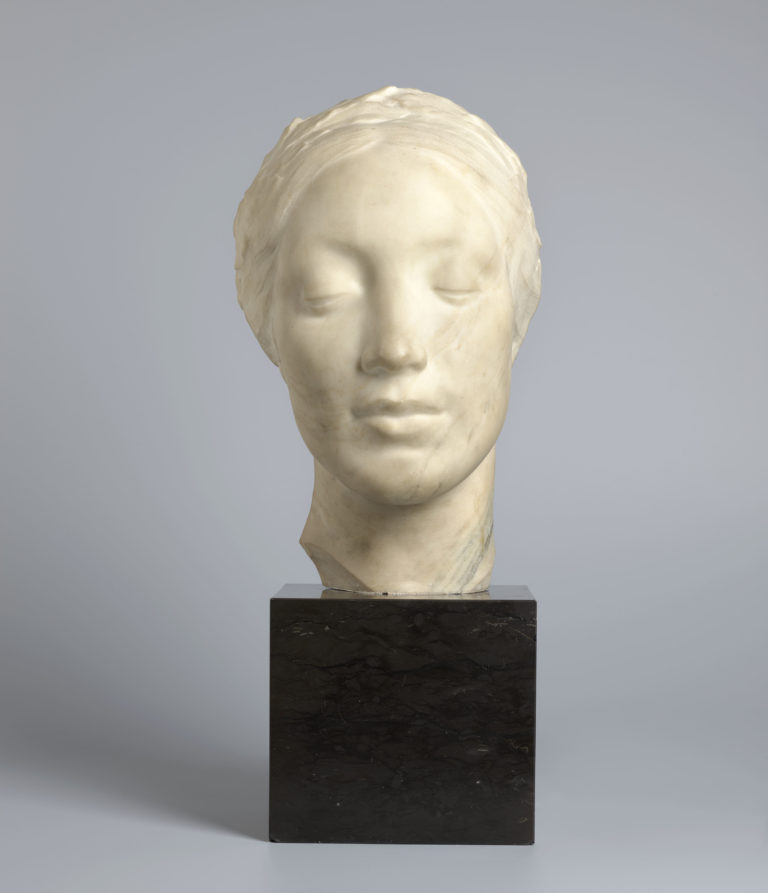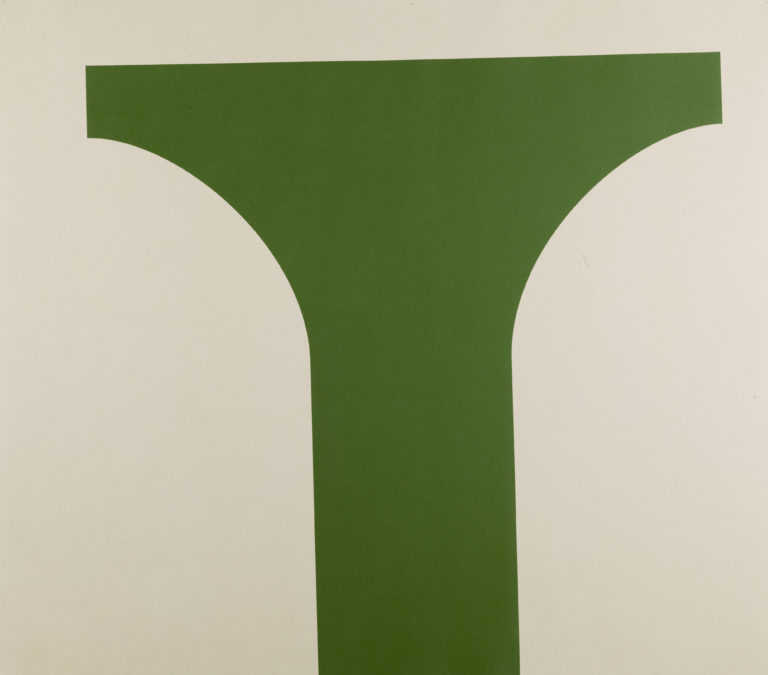Bibliography
Laurence Madeline (ed.), Gustave Courbet. Les années suisses, exh. cat. Geneva, Musée Rath, Paris, Artlys, 2014: 233, and n. 69.
Jörg Zutter (ed.), in collaboration with Petra ten-Doesschate Chu, Courbet. Artiste et promoteur de son œuvre, exh. cat. Lausanne, Musée cantonal des Beaux-Arts, Paris, Flammarion, 1998: n. 68.
Pierre Chessex, Courbet et la Suisse, exh. cat. La Tour-de-Peilz, Château de La Tour-de-Peilz, 1982: n. 81.




Gustave Courbet’s time in exile in La Tour-de-Peilz inspired him mainly landscape paintings. He did not turn his back on the human figure completely, however, following a number of minor Swiss masters in painting portraits in folk costume. Here, he depicts a young woman from the Vaud with two local mountain peaks, the Dent de Jaman and the Rochers de Naye, in the background.
She is shown in profile, her hoe over her shoulder, a basket on her back, and her copper lunch box in hand. The black bodice was then in fashion, while the blouse and apron were also worn in other rural regions. The only aspect of her garb truly typical of the Vaud is her hat with its characteristic borne, or topknot.
Courbet hoped the Swiss subject would rouse curiosity back in Paris, but it was not to be. His friend Étienne Baudry sent back the canvas and advised him to seek a local buyer: “[…] I have returned the Grape picker, Montreux, since I think she is better with you than in Paris where there is no call for Swiss folk costumes. I was disappointed to hear people saying it was a shame it was from Switzerland”. The painting must not have found a buyer in its home country either, since it was listed in Courbet’s possessions after his death.
It is perhaps surprising it remained unsold, since it is a fine piece of work. The model’s pose and her dominant centrality – take for instance the puffed white sleeve at the centre of the canvas, a masterpiece of textured paint capturing the nature of the fabric – make this more than just an anecdotal, picturesque record of folk costume. The hoe reflecting the mountain that in turn bears the shadow of the tool weaves an inspired new bond between the reality of the figure and the artificiality of a setting that evokes the painted backdrops of photographic studios.